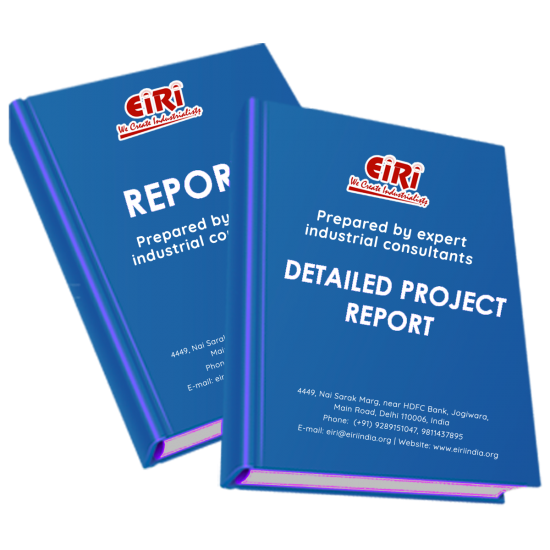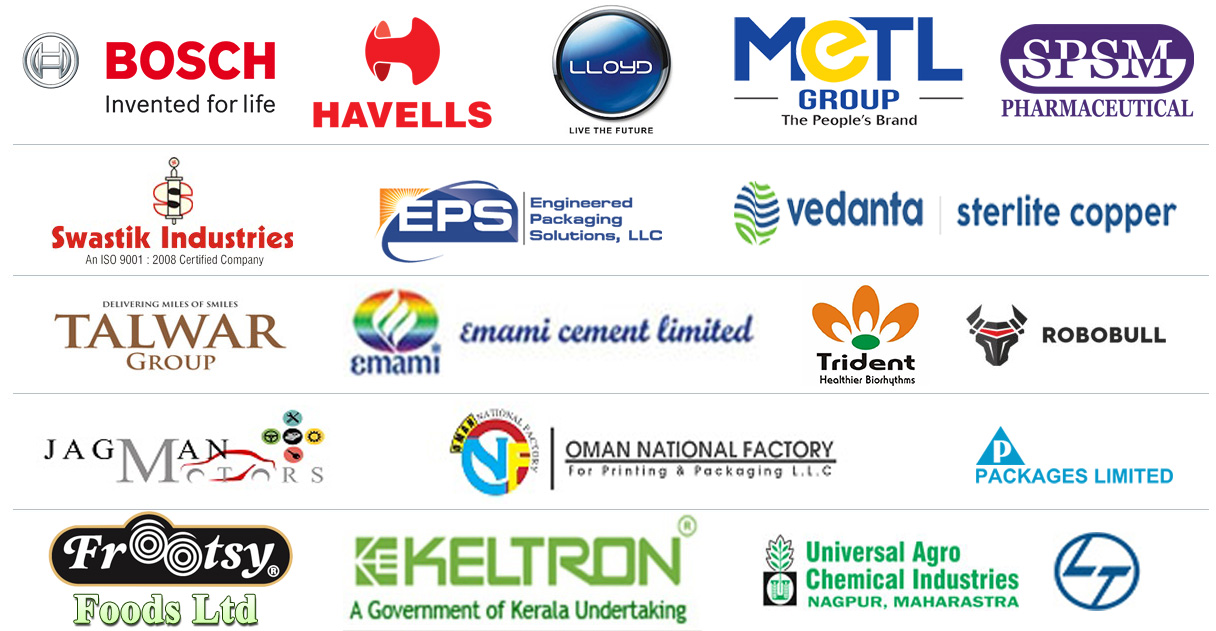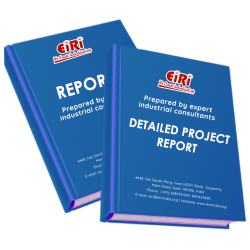Detailed Project Report on kraft paper from waste paper (40 tpd)

- More than 40 years of experience
- Managed by expert industrial consultants
- ISO 9001-2015 Certified
- Registered under MSME, UAM No: DL01E0012000
- 24/5 Research Support
Get your quesries resolved from an industry expert. Ask your queries before report or book purchase. - Custom Research Service
Speak to the our consultant to design an exclusive study to serve your research needs. - Quality Assurance
All reports are prepared by highly qualified consultants & verified by a panel of experts. - Information Security
Your personal & confidential information is safe & secure.
KRAFT PAPER FROM WASTE PAPER (40 TPD)
[CODE NO.3360]
Paper form a commodity of prime importance to day from the parts of view of mass communication, education, and industrial and economic growth. The art of paper making was first discovered in China in and around 2nd century. B.C. pan where it travelled slowly west ward and reached the prantiens of Europe. By the end of 14th century, a member of paper mill existed in Europe, particularly in Spain, Italy, France and Germany. the invention of printing in 1956 brought a vastly in creased demand for paper, and paper-manufacturing was introduced to England. America followed in 1690.
Agricultural residues, such as bagasse, rice husk, wheat husk jute sticks, grasses, etc are fast becoming popular materials for paper making. considerable attention is being given to the utilization of various agricultural by products for preparing pulp for paper manufacture landable efforts are being make in this direction.
Paper production requires a disintegration of the bulky fibrous material to individual or small agglomerate fibres.
This is called pulping. The ideal fibre for high grade paper should be long, high in cellulose content and low in ligrin content. Most ideal raw material for paper products is bamboo. Other sources are bagasse and hardwoods like jute stick must be developed and good quality paper pulp make by blending with bamboo fibre.
Over recent years, the emergencies of mini paper plants on a reality seems to hold the promise of adding new horizons to the development and growth of Indian paper industry. In may be noted with concern that the large sector of this industry for quite sometime, has failed to sustain any appreciable growth due to various factors eg. The plant being highly capital intensive low rats of return and the raw material bottlenecks etc. mini paper plants are viewed as an effective remedy to the current ailments of the paper industry as they involve much less capital cost and are proved to be technically feasible and economically viable these plants can be erected on the basis of fully indigenous expertise, know how and machinery. Moreover, they after an effective means of lasing considerably the burden an conventional raw materials.
The paper industry of India is faced with numerous difficulties, some of which are given below
1. Shortage of Fibrous Raw Material
The lack forest resources requires long range planning for development of improved bamboo has vesting utilization of bagasse, jute etc.
2. High process and Shortage of Chemicals
Shortage of sulphur, salt cake (Na2So4) and chlorine with corresponding high prices place in the Indian paper industry to a great disadvantage in attempting to export paper product to a regement of foreign exchange position. This forces a great deal move attention an chemical recovery methods.
Due to the above problems, it become necessary to use simple and more scientific methods for the manufacture of paper products. Due to the lack of the fibres material jute stick is now being started to be wed as the starting material. the paper produced from jute is very hard and has comparatively high tensile strength. Move over, the chemicals used are available indigenously without any difficulty. There are move than 30 to 40 paper industries producing in public and small scale sector. The other factors which can be kept in view in selecting the raw materials.
1. The fibres of the raw material should be of high strength.
2. Strength methods used for preparing the pulp shaved be easy and hot be complicated.
3. Properties of the product shaved be of quality by seeing the above problems and jute sticks are quite suitable for the production of paper. A good supply of jute sticks should be ensured by the suppliers.
Mini paper plants are mainly dependent on supplies of waste paper and rafs. They also make pulp out of cereal straw and other agricultural residues. A further important factor in favour of the mini paper plants is that their consumption of chemicals is far less than in the large scale units, and the power requirements are also less. The quality of paper produced in mini paper plants is, however, some what inferior to that obtainable in large scale units.
COST ESTIMATION
Plant Capacity : 40.00 MT/day
land & Building (16000 sq.Mtr : Rs.12.00 Cr
Plant & Machinery : Rs. 15.19 Cr
Working Capital for 3 Months : Rs. 9.61 Cr
Total Capital Investment : Rs. 37.74 Cr
Rate of Return : 32%
Break Even Point : 48%
INTRODUCTION
USES AND APPLICATION
B. I. S. SPECIFICATION
B.I.S. SPECIFICATION FOR KRAFT PAPER
MARKET SURVEY
GLOBAL MARKET POSITION OF KRAFT PAPER
OVERVIEW OF PAPER MARKET IN AFRICA
INSTALLED CAPACITY OF PULP,PAPER AND PAPER BOARD IN AFRICA
GLOBAL INSTALLED CAPACITY OF PULP, PAPER AND PAPER BOARD
PRODUCTION OF KRAFT PAPER IN AFRICA
IMPORT AND EXPORT OF KRAFT PAPER IN 41
APPARENT CONSUMPTION OF KRAFT IN AFRICA
ESTIMATED DEMAND OF KRAFT PAPER IN AFRICA
DEMAND SUPPLY GAP OF KRAFT PAPER IN AFRICA
GLOBAL PACKAGING MARKET POSITION
PRESENT MANUFACTURERS/SUPPLIERS
MANUFACTURING PROCESS OF KRAFT PAPER
PROCESS FLOW DIAGRAM FOR MANUFACTURE OF KRAFT PAPER FROM WASTE PAPER
FLOW SHEET OF MANUFACTURE OF PAPER
FORMING OF WET WEB, PRESSING THE WET SHEET
AND DRYING THE SHEET
METHOD OF PREPARATION OF DIFFERENT TYPES OF PULPS
PLANT LAYOUT
POLLUTION CONTROL IN PULP AND PAPER INDUSTRIES(IN DETAIL)
COMMON PULPING PROCESSES
CHEMICAL CHARACTERISTIC OF EFFLUENT FROM A LARGE SULPHATE
(KRAFT) PULP AND PAPER MILL USING CHEMICAL RECOVERY
POLLUTION CONTROL FOR LIQUID EFFLUENTS
COMPLETE MACHINERY MANUFACTURERS/ SUPPLIERS FOR PAPER PLANT
SUPPLIERS OF RAW MATERIALS
PLANT AND MACHINERY SPECIFICATIONS FOR KRAFT PAPER FROM WASTE PAPER
LIST OF PLANT & MACHINERY WITH COST
WASTE TREAD STREET
LIQUOR AND CHEMICAL PREPARATION SECTION
STOCK PREPARATION AND APPROACH FLOW SYSTEM
APPENDIX – A:
1. COST OF PLANT ECONOMICS
2. LAND & BUILDING
3. PLANT AND MACHINERY
4. FIXED CAPITAL INVESTMENT
5. RAW MATERIAL
6. SALARY AND WAGES
7. UTILITIES AND OVERHEADS
8. TOTAL WORKING CAPITAL
9. COST OF PRODUCTION
10. PROFITABILITY ANALYSIS
11. BREAK EVEN POINT
12. RESOURCES OF FINANCE
13. INTEREST CHART
14. DEPRECIATION CHART
15. CASH FLOW STATEMENT
16. PROJECTED BALANCE SHEET
How to Make Project Report?
Detailed Project Report (DPR) includes Present Market Position and Expected Future Demand, Technology, Manufacturing Process, Investment Opportunity, Plant Economics and Project Financials. comprehensive analysis from industry covering detailed reporting and evaluates the position of the industry by providing insights to the SWOT analysis of the industry.
Each report include Plant Capacity, requirement of Land & Building, Plant & Machinery, Flow Sheet Diagram, Raw Materials detail with suppliers list, Total Capital Investment along with detailed calculation on Rate of Return, Break-Even Analysis and Profitability Analysis. The report also provides a birds eye view of the global industry with details on projected market size and then progresses to evaluate the industry in detail.
We can prepare detailed project report on any industry as per your requirement.
We can also modify the project capacity and project cost as per your requirement. If you are planning to start a business, contact us today.
Detailed Project Report (DPR) gives you access to decisive data such as:
- Market growth drivers
- Factors limiting market growth
- Current market trends
- Market structure
- Key highlights
Overview of key market forces propelling and restraining market growth:
- Up-to-date analyses of market trends and technological improvements
- Pin-point analyses of market competition dynamics to offer you a competitive edge major competitors
- An array of graphics, BEP analysis of major industry segments
- Detailed analyses of industry trends
- A well-defined technological growth with an impact-analysis
- A clear understanding of the competitive landscape and key product segments
Need Customized Project Report?
- Ask for FREE project related details with our consultant/industry expert.
- Share your specific research requirements for customized project report.
- Request for due diligence and consumer centric studies.
- Still haven't found what you're looking for? Speak to our Custom Research Team
About Engineers India Research Institute:
Note: We can also prepare project report on any subject based on your requirement and country. If you need, we can modify the project capacity and project cost based on your requirement.
Our Clients

Our Approach
- Our research reports comprehensively cover Indian markets (can be modified as per your country), present investigation, standpoint and gauge for a time of five years*.
- The market conjectures are produced on the premise of optional research and are cross-accepted through associations with the business players
- We use dependable wellsprings of data and databases. What's more, data from such sources is handled by us and incorporated into the report
Why buy EIRI reports?
- Our project reports include detailed analysis that help to get industry Present Market Position and Expected Future Demand.
- Offer real analysis driving variables for the business and most recent business sector patterns in the business
- This report comprehends the present status of the business by clarifying a complete SWOT examination and investigation of the interest supply circumstance
- Report gives investigation and top to bottom money related correlation of real players/competitors
- The report gives gauges of key parameters which foresees the business execution





















